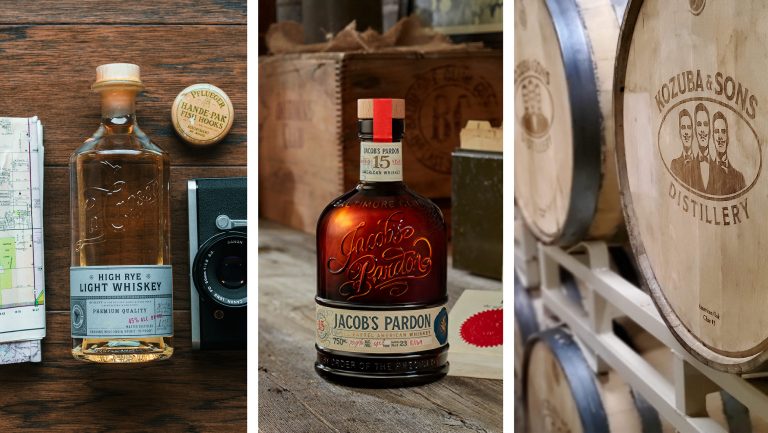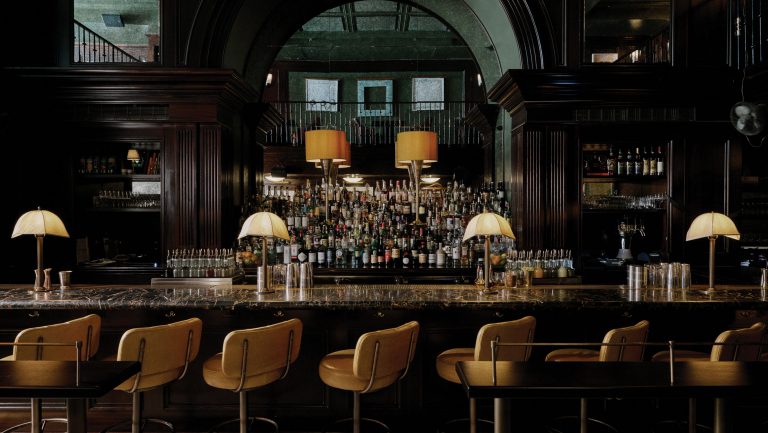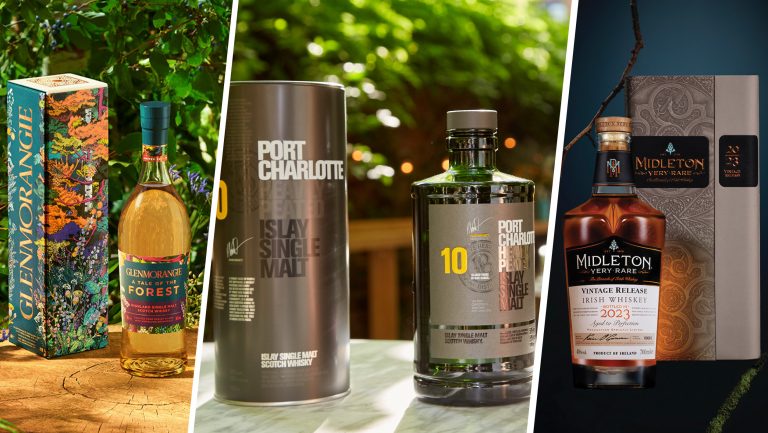If some distillers have their way, another obscure spirit category is heading for a comeback.
Light whiskey, a category created in 1968, was an attempt by American distillers to turn back the tide of vodka and imported whiskeys which had decimated domestic sales. It never made much of a dent in drinking consciousness and faded like many other 1960s fads.
But the recent introduction of a super-premium entrant overseen by spirits guru Paul Pacult is bringing the spotlight back on the category. Launched by Marc and Jake Taub, two scions of the family-owned importer Palm Bay and Taub Family Selections, Jacob’s Pardon entered the market in October 2020 with two 15-year-old single barrel light whiskeys in the portfolio (on the label, they are simply called “American Whiskey”).

Don’t miss the latest drinks industry news and insights. Sign up for our award-winning newsletters and get insider intel, resources, and trends delivered to your inbox every week.
Designed to be light in flavor and color—distilled up to 190 proof and aged in either used oak barrels or uncharred new ones—light whiskey has been described by its current producers as a new entry point to whiskey, a way station between vodka and bourbon, or both. But what’s the point in today’s market where intense flavors reign and whiskey drinkers are no longer in need of an accessible on-ramp?
One obvious appeal is for new distillers looking to get product to market quickly while other stocks mature, especially since the moonshine bubble seems to have burst.
Yet the intrigue for others, including the Taubs, is an availability of older light whiskey stocks. With aged bourbon and rye stocks so picked over, the appeal of long-aged, interesting liquid means the light whiskey offers unique opportunity.

From Blending Spirit to Sipper
Light whiskey’s primary use has long been blending, though the 14-plus year old barrels were mostly a result of blended whiskey’s decline in demand, says David Dykstra, vice president of alcohol sales and marketing of light whiskey producer MGP Ingredients.
“There’s been an uptick in interest in this category because light whiskey took a backseat to aged whiskey for several years,” says Dykstra. “Now, as stocks of aged product have tightened, we’re seeing more interest in light whiskeys and have noticed increased light whiskey production at some craft distillers.”
Pacult, who selected the light whiskey single barrels (the third Jacob’s Pardon is a blend of light and Tennessee whiskey), says the high proof and low level of congeners and esters offer a blank canvas ripe for the influence of long aging in barrel.
“Because it is so high in alcohol, so pure, what it picks up from the wood over a period of 15 years is astounding,” he describes.
While Jacob’s Pardon and Utah distiller High West bottled long-aged lights (in 2016, High West offered an MGP-sourced 14-year-old, and in 2018 one that had been finished more than two years longer in bourbon barrels), others are looking for attributes that briefly aged light whiskeys can offer.
Tom Buchsbaum, the cofounder of Austin Craft Spirits Company, for example, prefers fewer barrel notes in his Austin 101. “I’ve heard many people say that two-thirds of the bourbon and rye flavor profile comes from the barrel,” he says. “We wanted two-thirds of our flavor to be from the essence of our grains and only one-third or less to come from barrels that we use, something that was more like the essence of the grain, sort of like an eau-de-vie.”
Making a light whiskey wasn’t Buchsbaum’s goal, but the legal definition fit for the spirit with a high winter wheat mash bill in addition to Texas-sourced corn and malted barley. “Our intent was to make a very different kind of grain spirit,” he says. “There’s a big range here between what one would consider bourbon and vodka, and in that range is the potential for light whiskey.”
This same desire to showcase a grain-forward flavor profile is also what drove Matthias Kozuba of Kozuba and Sons Distillery in Florida to enter the category. “We wanted to have the product with a lighter flavor profile that would be an easy sipping whiskey. We were aiming for something flavor-wise between vodka and whiskey,” he explains.

A Blank Canvas Category
The light whiskey category most closely mirrors the traditional Polish spirit that the Kozuba family was aiming to create. When still operating a facility in Poland, the Kozubas (father Zbigniew and brother Jakub) made a Polish-Lithuanian style malted rye whiskey called starka. They ran into TTB labeling issues when trying to import, but when moving their operation to Florida, they tweaked the recipe to be higher proof and aged in used barrels for up to a year.
Called Starkus Light Whiskey, the low tannin spirit “still carries the vanilla note, some of the subtle oaky and caramel notes,” Kozuba says. “We consider it a perfect proposition for those who are just beginning their journey in the world of whiskey.”

Rye in a Different Light
In Wisconsin, the folks at La Crosse Distilling stumbled onto the idea, says cofounder Chad Staehly, who with partner Nick Webber focuses on the region’s organic ingredients. In addition to making vodka and gin, as their whiskeys aged they wanted to bottle a white rye, but were turned down by the TTB. Then they happened upon the description for light whiskey.
“So we said, ’Let’s go with this so we have something whiskey-based that would get us started,’” recalls Staehly. “Then we started playing with how long we were going to let it sit in these barrels, experimenting with used barrels and lightly toasted barrels, and we now kind of have a four-barrel rotation.”
The result is La Crosse High Rye Light Whiskey. “We found that this was kind of like a gateway spirit,” he adds. “For people who weren’t whiskey and bourbon drinkers, this was kind of a pivot for them.”
As intriguing and accessible as light whiskeys may be, the market may be limited as long as makers emphasize “light” on the label, Pacult says, although he believes the whiskey aficionado may turn out to be just as interested as neophytes, as various distillers play with base ingredients and aging possibilities and reveal the potential the category has for complexity. That, at least, is the hope of these new advocates of the light.

Dispatch
Sign up for our award-winning newsletter
Don’t miss the latest drinks industry news and insights—delivered to your inbox every week.







